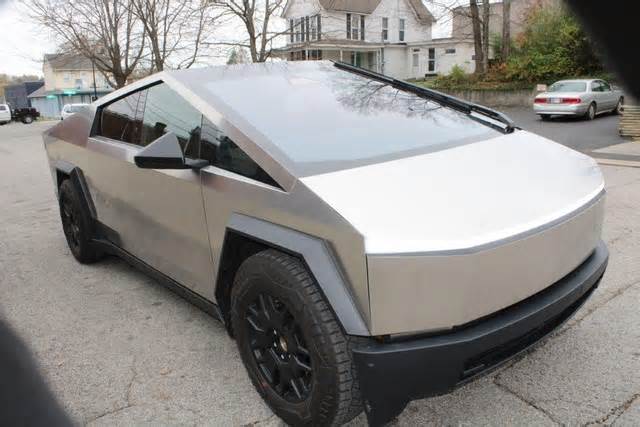
After seeing hundreds of launches, SpaceX’s rocket catch was a new thrill
- by Ars Technica
- Oct 21, 2024
- 0 Comments
- 0 Likes Flag 0 Of 5

Credit: Brandon Bell/Getty Images
I chose a location with an ambiance somewhere in between the hustle and bustle of South Padre Island and the isolated beach just across the border in Mexico. The vibe on the eve of the launch had the mix of a rave and a pilgrimage of SpaceX true believers.
A laser light show projected the outline of a Starship against a tree as uptempo EDM tracks blared from speakers. Meanwhile, dark skies above revealed cosmic wonders invisible to most city dwellers, and behind us, the Rio Grande inexorably flowed toward the sea. Those of us who were there to work got a few hours of sleep, but I'm not sure I can say the same for everyone.
At first light, a few scattered yucca plants sticking up from the chaparral were the only things between us and SpaceX's sky-scraping Starship rocket on the horizon. We got word the launch time would slip 25 minutes. SpaceX chose the perfect time to fly, with a crystal-clear sky hued by the rising Sun.
First, you see it
I was at Starbase for all four previous Starship test flights and have covered more than 300 rocket launches in person. I've been privileged to witness a lot of history, but after hundreds of launches, some of the novelty has worn off. Don't get me wrong—I still feel a lump in my throat every time I see a rocket leave the planet. Prelaunch jitters are a real thing. But I no longer view every launch as a newsworthy event.
October 13 was different.
Those prelaunch anxieties were present as SpaceX counted off the final seconds to liftoff. First, you see it. A blast of orange flashed from the bottom of the gleaming, frosty rocket filled with super-cold propellants. Then, the 11 million-pound vehicle began a glacial climb from the launch pad. About 20 seconds later, the rumble from the rocket's 33 methane-fueled engines reached our location.
Our viewing platform shook from the vibrations for over a minute as Starship and the Super Heavy booster soared into the stratosphere. Two-and-a-half minutes into the flight, the rocket was just a point of bluish-white light as it accelerated east over the Gulf of Mexico.
Another burst of orange encircled the rocket during the so-called hot-staging maneuver, when the Starship upper stage lit its engines at the moment the Super Heavy booster detached to begin the return to Starbase. Flying at the edge of space more than 300,000 feet over the Gulf, the booster flipped around and fired its engines to cancel out its downrange velocity and propel itself back toward the coastline.
The engines shut down, and the booster plunged deeper into the atmosphere. Eventually, the booster transformed from a dot in the sky back into the shape of a rocket as it approached Starbase at supersonic speed. The rocket's velocity became more evident as it got closer. For a few moments, my viewing angle made it look like the rocket—bigger than the fuselage of a 747 jumbo jet—was coming right at me.
The descending booster zoomed through the contrail cloud it left behind during launch, then reappeared into clear air. With the naked eye, I could see a glow inside the rocket's engine bay as it dived toward the launch pad, presumably from heat generated as the vehicle slammed into ever-denser air on the way back to Earth. This phenomenon made the rocket resemble a lit cigar.
Finally, the rocket hit the brakes by igniting 13 of its 33 engines, then downshifted to three engines for the final maneuver to slide in between the launch tower's two catch arms. Like balancing a pencil on the tip of your finger, the Raptor engines vectored their thrust to steady the booster, which, for a moment, appeared to be floating next to the tower.
The Super Heavy booster, more than 20 stories tall, rights itself over the launch pad in Texas, moments before two mechanical arms grabbed it in mid-air.
Credit:
Stephen Clark/Ars Technica
The Super Heavy booster, more than 20 stories tall, rights itself over the launch pad in Texas, moments before two mechanical arms grabbed it in mid-air.
Credit:
Stephen Clark/Ars Technica
A double-clap sonic boom jolted spectators from their slack-jawed awe. Only then could we hear the roar from the start of the Super Heavy booster's landing burn. This sound reached us just as the rocket settled into the grasp of the launch tower, with its so-called catch fittings coming into contact with the metallic beams of the catch arms.
The engines switched off, and there it was. Many of the spectators lucky enough to be there jumped up and down with joy, hugged their friends, or let out an ecstatic yell. I snapped a few final photos and returned to my laptop, grinning, speechless, and started wondering how I could put this all into words.
Once the smoke cleared, at first glance, the rocket looked as good as new. There was no soot on the outside of the booster, as it is on the Falcon 9 rocket after returning from space. This is because the Super Heavy booster and Starship use cleaner-burning methane fuel instead of kerosene.
Elon Musk, SpaceX's founder and CEO, later said the outer ring of engine nozzles on the bottom of the rocket showed signs of heating damage. This, he said, would be "easily addressed."
What's not so easy to address is how SpaceX can top this. A landing on the Moon or Mars? Sure, but realistically, those milestones are years off. There's something that'll happen before then.
Sometime soon, SpaceX will try to catch a Starship back at the launch pad at the end of an orbital flight. This will be an extraordinarily difficult feat, far exceeding the challenge of catching the Super Heavy booster.
Super Heavy only reaches a fraction of the altitude and speed of the Starship upper stage, and while the booster's size and the catch method add degrees of difficulty, the rocket follows much the same up-and-down flight profile pioneered by the Falcon 9. Starship, on the other hand, will reenter the atmosphere from orbital velocity, streak through the sky surrounded by super-heated plasma, then shift itself into a horizontal orientation for a final descent SpaceX likes to call the "belly flop."
In the last few seconds, Starship will reignite three of its engines, flip itself vertical, and come down for a precision landing. SpaceX demonstrated the ship could do this on the test flight last week, when the vehicle made a controlled on-target splashdown in the Indian Ocean after traveling halfway around the world from Texas.
If everything goes according to plan, SpaceX could be ready to try to catch a Starship for real next year. Stay tuned.
Please first to comment
Related Post
Stay Connected
Tweets by elonmuskTo get the latest tweets please make sure you are logged in on X on this browser.
Sponsored
Popular Post
Tesla: Buy This Dip, Energy Growth And Margin Recovery Are Vastly Underappreciated
28 ViewsJul 29 ,2024






 Energy
Energy



















